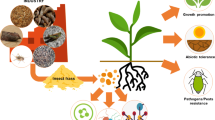Abstract
Nitrogen (N) and energy (E) requirements of the phyllostomid fruit bat, Artibeus jamaicensis, and the pteropodid fruit bat Rousettus aegyptiacus, were measured in adults that were fed on four experimental diets. Mean daily food intake by A. jamaicensis and R. aegyptiacus ranged from 1.1–1.6 times body mass and 0.8–1.0 times body mass, respectively. Dry matter digestibility and metabolizable E coefficient were high (81.1% and 82.4%, respectively) for A. jamaicensis and (77.5% and 78.0%, respectively) for R. aegyptiacus. Across the four diets, bats maintained constant body mass with mean metabolizable E intakes ranging from 1357.3 kJ · kg−0.75 · day−1 to 1767.3 kJ · kg−0.75 · day−1 for A. jamaicensis and 1282.6–1545.2 kJ · kg−0.75 · day−1 for R. aegyptiacus. Maintenance E costs were high, in the order of 3.6–5.4 times the basal metabolic rate (BMR). It is unlikely that the E intakes that we observed represent a true measure of maintenance E requirements. All evidence seems to indicate that fruit bats are E maximizers, ingesting more E than required and regulating storage by adjusting metabolic output. We suggest that true maintenance E requirements are substantially lower than what we observed. If it follows the eutherian norm of two times the BMR, fruit bats must necessarily over-ingest E on low-N fruit diet. Dietary E content did affect N metabolism of A. jamaicensis. On respective low- and high-E diets, metabolic fecal N were 0.492 mg N · g−1 and 0.756 mg N · g−1 dry matter intake and endogenous urinary N losses were 163.31 mg N · kg−0.75 · day−1 and 71.54 mg N · kg−0.75 · day−1. A. jamaicensis required 332.3 mg · kg−0.75 · day−1 and 885.3 mg · kg−0.75 · day−1 of total N on high- and low-E diets, respectively, and 213.7 mg · kg−0.75 · day−1 of truly digestible N to achieve N balance. True N digestibilities were low (29% and 49%) for low- and high-E diets, respectively. For R. aegyptiacus, metabolic fecal N and endogenous urinary N losses were 1.27 mg N · g−1 dry matter intake and 96.0 mg N · kg−0.75 · day−1, respectively, and bats required 529.8 mg · kg−0.75 · day−1 (total N) or 284.0 mg · kg−0.75 · day−1 (truly digestible N). True N digestibility was relatively low (50%). Based on direct comparison, we found no evidence that R. aegyptiacus exhibits a greater degree of specialization in digestive function and N retention than A. jamaicensis. When combined with results from previous studies, our results indicate that all fruit bats appear to be specialized in their ability to retain N when faced with low N diet.
Similar content being viewed by others
Author information
Authors and Affiliations
Additional information
Accepted: 24 November 1998
Rights and permissions
About this article
Cite this article
Delorme, M., Thomas, D. Comparative analysis of the digestive efficiency and nitrogen and energy requirements of the phyllostomid fruit-bat (Artibeus jamaicensis) and the pteropodid fruit-bat (Rousettus aegyptiacus). J Comp Physiol B 169, 123–132 (1999). https://doi.org/10.1007/s003600050202
Issue Date:
DOI: https://doi.org/10.1007/s003600050202




